 Technology peripherals
Technology peripherals
 AI
AI
 A relay spanning more than 300 years: Inspired by Terence Teru, mathematicians decided to use AI to formalize the proof of Fermat's Last Theorem.
A relay spanning more than 300 years: Inspired by Terence Teru, mathematicians decided to use AI to formalize the proof of Fermat's Last Theorem.
A relay spanning more than 300 years: Inspired by Terence Teru, mathematicians decided to use AI to formalize the proof of Fermat's Last Theorem.
Inspired by Terence Tao, more and more mathematicians are beginning to try to use artificial intelligence for mathematical exploration. This time, their target is Fermat's Last Theorem, one of the world's top ten most difficult mathematical problems. Fermat's Last Theorem is a very complex mathematical problem for which no feasible solution has been found so far. Mathematicians hope that with the help of artificial intelligence's powerful computing power and intelligent algorithms, they can explore in mathematics
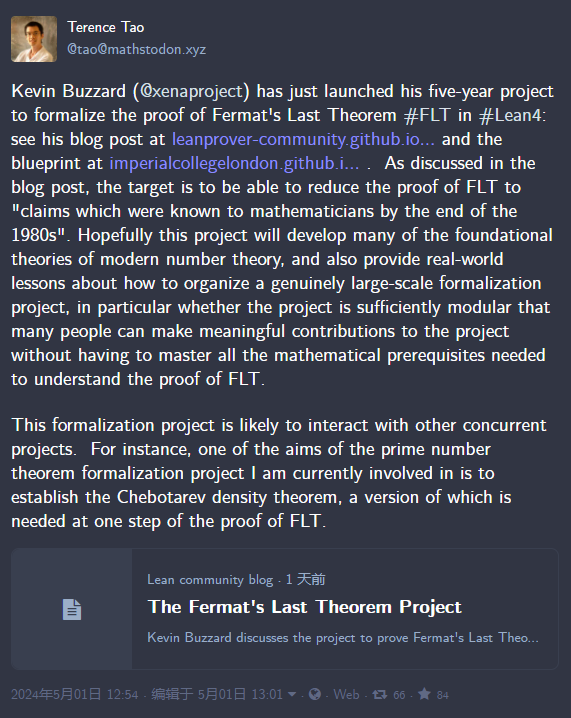
Fermat's Last Theorem is also known as "Fermat's Last Theorem" Last Theorem (FLT)" was proposed by the 17th-century French mathematician Pierre de Fermat. There is a legendary story behind it. It is said that around 1637, when Fermat was reading the Latin translation of Diophantus' Arithmetic, he wrote next to Proposition 8 of Volume 11: "Divide a cubic number into the sum of two cubic numbers, or It is impossible to divide a fourth power into the sum of two fourth powers, or generally a power higher than the second power into the sum of two powers of the same power. "I am convinced that I have discovered something about this. This is a wonderful demonstration, but unfortunately the blank space here is too small to write it down. ”
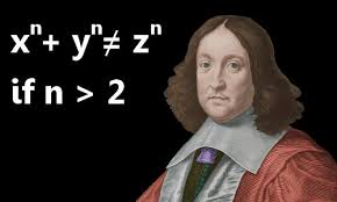
What is stated before this paragraph is the content of Fermat’s last theorem: when the integer n>2, the equation about x^n y^n=z^n There is no positive integer solution.
Fermat said that he knew how to prove it, but because the blank part of the book was too small, he did not write about the authenticity of the story and whether Fermat really figured out the proof method. , it is controversial in later generations. For more than 300 years, mathematicians have been working hard to prove Fermat's last theorem. Until 1995, Professor Andrew Wiles of Princeton University in the United States spent 8 years. Working alone, Wiles finally completed the proof in 130 pages.
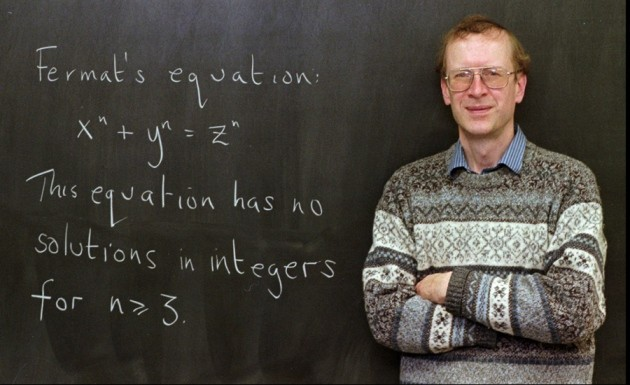 Now that Fermat's last theorem has been proved, mathematicians What else can you do with AI? The answer is: formalize its proofs.
Now that Fermat's last theorem has been proved, mathematicians What else can you do with AI? The answer is: formalize its proofs.
Formalization in mathematics usually refers to the use of strict formal languages (such as logic and set theory) to express mathematical objects, structures, Theorems and proofs enable them to be represented, verified and manipulated on computers, thereby ensuring the accuracy and consistency of mathematical content. The development of formal mathematics can be traced back to the late 19th and early 20th centuries, while modern formal mathematics The development of mathematical logic and computer science that began in the 20th century. The main goal of formal mathematics is to establish a formal system, which includes a set of symbols, a set of basic axioms and a set of reasoning rules. Through the application of these rules and axioms,
At the end of last year, Tao Zhexuan et al. Someone once used Lean (an interactive theorem prover and a programming language) to formalize one of their papers. The paper, a proof of a version of the polynomial Freiman-Ruzsa conjecture, was posted on arXiv last November. When writing Lean language code, Tao Zhexuan also used the AI programming assistant Copilot. This incident attracted widespread attention in the mathematics and artificial intelligence communities.
At the time, Kevin Buzzard of Imperial College London, the most important promoter of the Lean technology open source community, said: "Fundamentally, it is obvious that when you digitize something, you can Use it in new ways. We will digitize mathematics, which will make mathematics better."
This is Professor Buzzard, the mathematician who recently claimed to formalize the proof of Fermat's last theorem. The tools are also Lean.
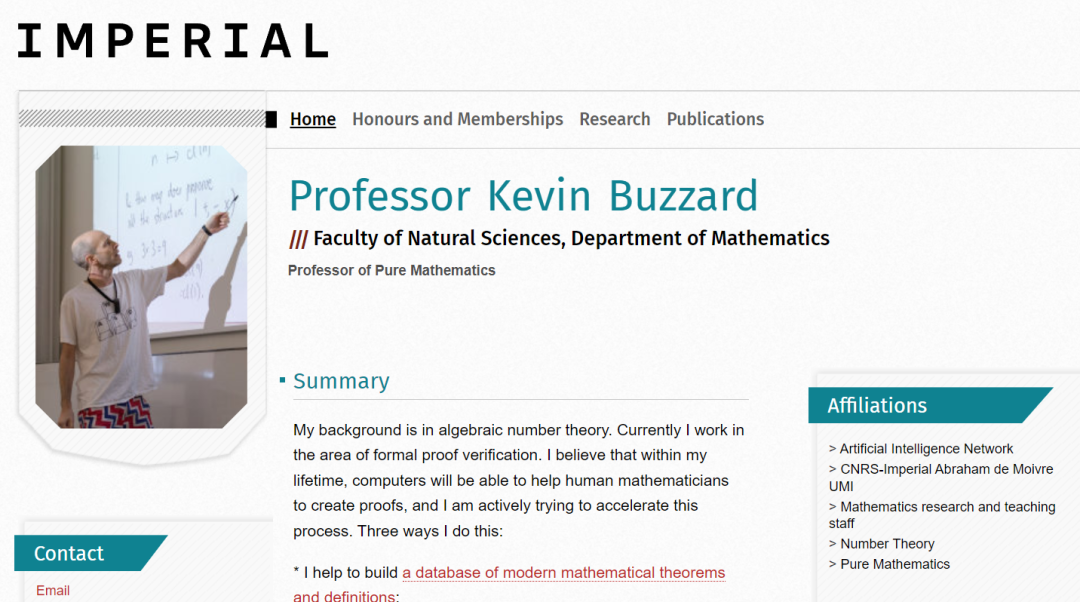 In a blog, he introduced the background, motivation and specific methods of doing this.
In a blog, he introduced the background, motivation and specific methods of doing this.
The form of Fermat's Last Theorem is very simple and intuitive, but proving it is extremely difficult. This is undoubtedly an excellent demonstration of the profound beauty of mathematics. Over the past few centuries, in order to solve this problem, mathematicians have developed and innovated a large number of mathematical theories, which have applications in fields ranging from cryptography to physics.
Andrew Wiles may have been inspired by FLT, but his work actually led to a breakthrough in the Langlands Project, a series of far-reaching ideas in mathematics that linked number theory, algebraic geometry, and approximation. The theory of group representation is still attracting attention in 2024.
Historically, several other major breakthroughs in algebraic number theory (such as the theory of factorization in number fields and arithmetic in cyclic fields) were motivated at least in part by the desire for a deeper understanding of FLT.
Wiles' work, complemented by his student Richard Taylor, built on a vast foundation of 20th-century mathematics. The basic technique introduced by Wiles - the "modularity lifting theorem" - has been conceptually greatly simplified and widely generalized in the 30 years since the original paper was published. This field is still very active today. Frank Calegari's paper at the 2022 International Congress of Mathematicians, outlining progress since Wiles' breakthrough (see: https://arxiv.org/abs/2109.14145). Kevin Buzzard said that the continued activity in this field was one of his motivations for formalizing the FLT proof.
Formalization of mathematics is the art of converting mathematics on paper into a computer programming language that enables the understanding of theorems and proof concepts. These programming languages, also known as interactive theorem provers (ITPs), have been around for decades. In recent years, however, this area seems to have attracted some attention from the mathematical community. We have witnessed several examples of formalization of research in mathematics, the latest of which is the formalization of the proof of the polynomial Freiman-Ruzsa conjecture by Terence Tao and others. This 2023 breakthrough paper was formalized in Lean in just three weeks. Such success stories might lead onlookers to think that ITPs like Lean are now ready to formalize all modern mathematics.
However, the truth is far from simple. In some areas of mathematics, such as combinatorics, we can see some modern breakthroughs being formalized in real time. However, Buzzard said he regularly attended London number theory seminars and often noticed that Lean's knowledge of modern mathematical definitions was insufficient to formulate the results announced at the seminars, let alone verify their proofs.
In fact, the "lag" of number theory in this aspect was one of Buzzard's main motivations for launching the formalization of contemporary proofs of FLT. By the end of the project, Lean will be able to understand automorphic forms (a special class of functions of complex variables) and representations, Galois representations, latent automorphism, modularity promotion theorems, arithmetic of algebraic varieties, class field theory, arithmetic duals Theorems, Shimura varieties and other concepts used in modern algebraic number theory. In Buzzard's view, with these foundations in place, formalizing what's happening in his own area of expertise will no longer be science fiction.
So, why do this? Buzzard explained, "If we believe some computer scientists, the exponential growth of artificial intelligence will eventually enable computers to help mathematicians in their research. Such work can help computers understand what we are doing in modern mathematical research."
How to carry out the project?
The formalization project of Fermat’s Last Theorem has now been launched. Buzzard shows current progress in a graphic.
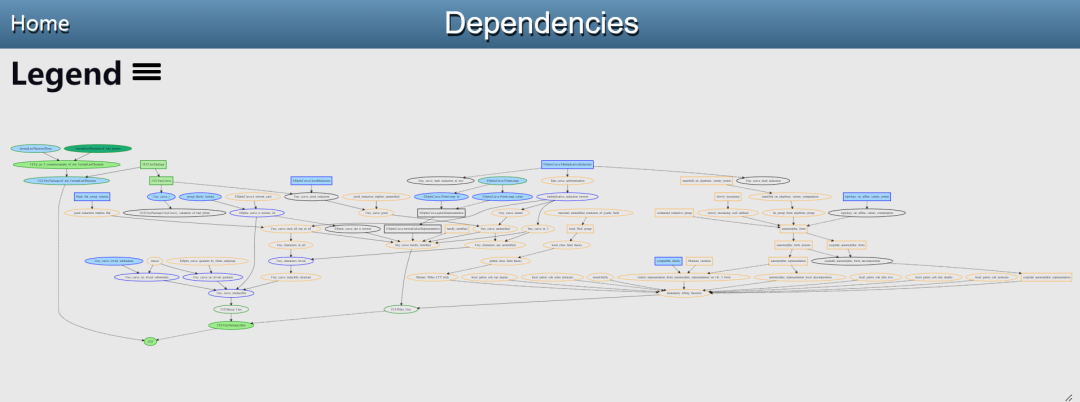
Interested researchers can read details: https://imperialcollegelondon.github.io/FLT/blueprint/dep_graph_document.html
This project is sponsored by EPSRC funding will see Buzzard receive funding for the first five years. During this period, his first goal was to reduce FLT to a statement known to mathematicians in the late 1980s.
Of course, Buzzard had no intention of doing this alone. He said that for some parts of the argument, he understood the basic principles but had never examined the details in detail. Furthermore, Project Langlands also introduced some important things, including GL_2's cyclic basis transformation and Jacquet-Langlands. His understanding of these profound things is not deep enough.
However, this is precisely the advantage of formal projects. Buzzard will be able to articulate the results he needs in Lean and communicate them to others. The beauty of this system is: you don’t have to understand the entire proof of FLT to contribute. The diagram above breaks the proof into many small lemmas, making it very convenient for crowdsourcing. If you can formally prove any of these lemmas, Buzzard would eagerly await your pull request.
Those who want to participate in the project need to know something about Lean. For this, Buzzard recommends the online textbook Mathematics in Lean.
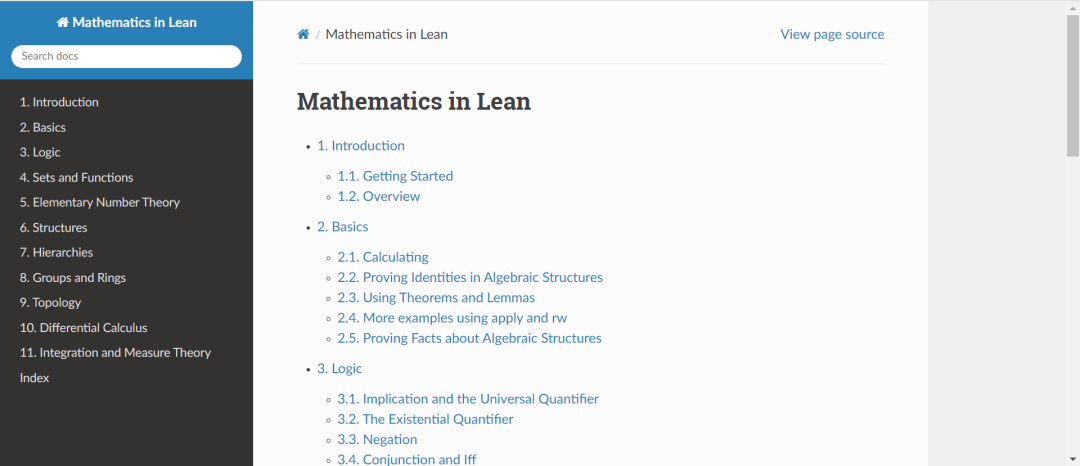
Textbook link: https://leanprover-community.github.io/mathematics_in_lean/
This project will be carried out on the FLT stream of Lean Zulip chat , a powerful research forum where mathematicians and computer scientists can collaborate in real time, easily publishing code and mathematics, using a thread and stream system to effectively support multiple independent conversations at the same time.
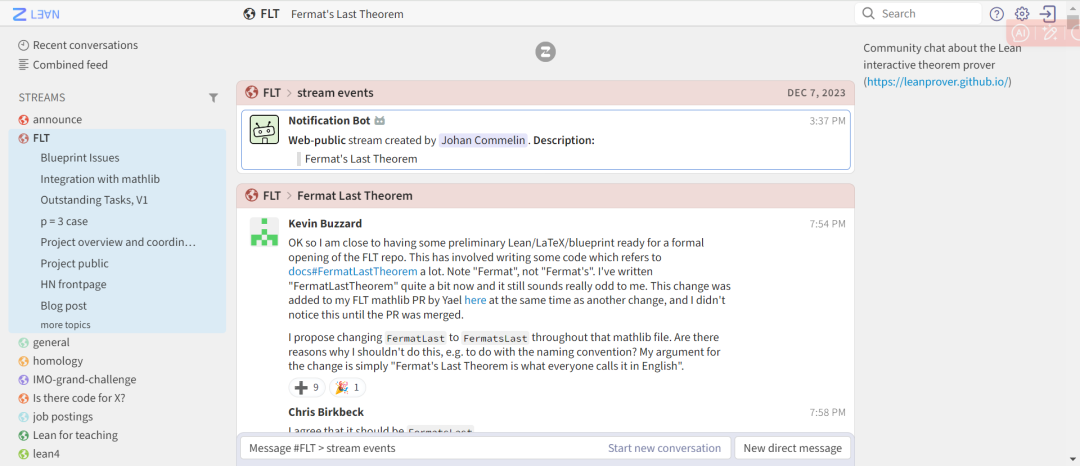
Lean Zulip chat link: https://leanprover.zulipchat.com/
Buzzard said he has no idea how long the project will take Premonition, but he's definitely optimistic.
At the same time, formal proof tools like Lean are also constantly iterating. Compared with the original Lean, the latest Lean 4 version has many optimizations, including a faster compiler, improved error handling, and better integration with external tools.
At the end of last year, the open platform LeanDojo team and researchers from the California Institute of Technology also launched Lean Copilot, a collaboration tool designed for large-scale language models to interact with humans, injecting AI into mathematical research. The power of big models.
"I predict that, if used correctly, AI will become a trusted co-author in mathematical research and many other fields by 2026." Tao Zhexuan said in a previous blog.
I hope Terence Tao’s prediction will come true soon.
Related reading:
《Tao Zhexuan’s favored proof assistant Lean uses a large model》
- ##《
Tao Zhexuan’s new project: proving the prime number theorem in Lean, the research blueprint has been completed》
Reference link: https://leanprover.zulipchat.com/#narrow/stream/416277-FLT
https: //mp.weixin.qq.com/s/d9RSkRhlKH5ZMek3yTqe4Q
The above is the detailed content of A relay spanning more than 300 years: Inspired by Terence Teru, mathematicians decided to use AI to formalize the proof of Fermat's Last Theorem.. For more information, please follow other related articles on the PHP Chinese website!

Hot AI Tools

Undresser.AI Undress
AI-powered app for creating realistic nude photos

AI Clothes Remover
Online AI tool for removing clothes from photos.

Undress AI Tool
Undress images for free

Clothoff.io
AI clothes remover

AI Hentai Generator
Generate AI Hentai for free.

Hot Article

Hot Tools

Notepad++7.3.1
Easy-to-use and free code editor

SublimeText3 Chinese version
Chinese version, very easy to use

Zend Studio 13.0.1
Powerful PHP integrated development environment

Dreamweaver CS6
Visual web development tools

SublimeText3 Mac version
God-level code editing software (SublimeText3)

Hot Topics
 How to install deepseek
Feb 19, 2025 pm 05:48 PM
How to install deepseek
Feb 19, 2025 pm 05:48 PM
There are many ways to install DeepSeek, including: compile from source (for experienced developers) using precompiled packages (for Windows users) using Docker containers (for most convenient, no need to worry about compatibility) No matter which method you choose, Please read the official documents carefully and prepare them fully to avoid unnecessary trouble.
 Summary of FAQs for DeepSeek usage
Feb 19, 2025 pm 03:45 PM
Summary of FAQs for DeepSeek usage
Feb 19, 2025 pm 03:45 PM
DeepSeekAI Tool User Guide and FAQ DeepSeek is a powerful AI intelligent tool. This article will answer some common usage questions to help you get started quickly. FAQ: The difference between different access methods: There is no difference in function between web version, App version and API calls, and App is just a wrapper for web version. The local deployment uses a distillation model, which is slightly inferior to the full version of DeepSeek-R1, but the 32-bit model theoretically has 90% full version capability. What is a tavern? SillyTavern is a front-end interface that requires calling the AI model through API or Ollama. What is breaking limit
 What are the AI tools?
Nov 29, 2024 am 11:11 AM
What are the AI tools?
Nov 29, 2024 am 11:11 AM
AI tools include: Doubao, ChatGPT, Gemini, BlenderBot, etc.
 What are the Grayscale Encryption Trust Funds? Common Grayscale Encryption Trust Funds Inventory
Mar 05, 2025 pm 12:33 PM
What are the Grayscale Encryption Trust Funds? Common Grayscale Encryption Trust Funds Inventory
Mar 05, 2025 pm 12:33 PM
Grayscale Investment: The channel for institutional investors to enter the cryptocurrency market. Grayscale Investment Company provides digital currency investment services to institutions and investors. It allows investors to indirectly participate in cryptocurrency investment through the form of trust funds. The company has launched several crypto trusts, which has attracted widespread market attention, but the impact of these funds on token prices varies significantly. This article will introduce in detail some of Grayscale's major crypto trust funds. Grayscale Major Crypto Trust Funds Available at a glance Grayscale Investment (founded by DigitalCurrencyGroup in 2013) manages a variety of crypto asset trust funds, providing institutional investors and high-net-worth individuals with compliant investment channels. Its main funds include: Zcash (ZEC), SOL,
 As top market makers enter the crypto market, what impact will Castle Securities have on the industry?
Mar 04, 2025 pm 08:03 PM
As top market makers enter the crypto market, what impact will Castle Securities have on the industry?
Mar 04, 2025 pm 08:03 PM
The entry of top market maker Castle Securities into Bitcoin market maker is a symbol of the maturity of the Bitcoin market and a key step for traditional financial forces to compete for future asset pricing power. At the same time, for retail investors, it may mean the gradual weakening of their voice. On February 25, according to Bloomberg, Citadel Securities is seeking to become a liquidity provider for cryptocurrencies. The company aims to join the list of market makers on various exchanges, including exchanges operated by CoinbaseGlobal, BinanceHoldings and Crypto.com, people familiar with the matter said. Once approved by the exchange, the company initially planned to set up a market maker team outside the United States. This move is not only a sign
 Delphi Digital: How to change the new AI economy by parsing the new ElizaOS v2 architecture?
Mar 04, 2025 pm 07:00 PM
Delphi Digital: How to change the new AI economy by parsing the new ElizaOS v2 architecture?
Mar 04, 2025 pm 07:00 PM
ElizaOSv2: Empowering AI and leading the new economy of Web3. AI is evolving from auxiliary tools to independent entities. ElizaOSv2 plays a key role in it, which gives AI the ability to manage funds and operate Web3 businesses. This article will dive into the key innovations of ElizaOSv2 and how it shapes an AI-driven future economy. AI Automation: Going to independently operate ElizaOS was originally an AI framework focusing on Web3 automation. v1 version allows AI to interact with smart contracts and blockchain data, while v2 version achieves significant performance improvements. Instead of just executing simple instructions, AI can independently manage workflows, operate business and develop financial strategies. Architecture upgrade: Enhanced A
 Significantly surpassing SFT, the secret behind o1/DeepSeek-R1 can also be used in multimodal large models
Mar 12, 2025 pm 01:03 PM
Significantly surpassing SFT, the secret behind o1/DeepSeek-R1 can also be used in multimodal large models
Mar 12, 2025 pm 01:03 PM
Researchers from Shanghai Jiaotong University, Shanghai AILab and the Chinese University of Hong Kong have launched the Visual-RFT (Visual Enhancement Fine Tuning) open source project, which requires only a small amount of data to significantly improve the performance of visual language big model (LVLM). Visual-RFT cleverly combines DeepSeek-R1's rule-based reinforcement learning approach with OpenAI's reinforcement fine-tuning (RFT) paradigm, successfully extending this approach from the text field to the visual field. By designing corresponding rule rewards for tasks such as visual subcategorization and object detection, Visual-RFT overcomes the limitations of the DeepSeek-R1 method being limited to text, mathematical reasoning and other fields, providing a new way for LVLM training. Vis
 Bitwise: Businesses Buy Bitcoin A Neglected Big Trend
Mar 05, 2025 pm 02:42 PM
Bitwise: Businesses Buy Bitcoin A Neglected Big Trend
Mar 05, 2025 pm 02:42 PM
Weekly Observation: Businesses Hoarding Bitcoin – A Brewing Change I often point out some overlooked market trends in weekly memos. MicroStrategy's move is a stark example. Many people may say, "MicroStrategy and MichaelSaylor are already well-known, what are you going to pay attention to?" This is true, but many investors regard it as a special case and ignore the deeper market forces behind it. This view is one-sided. In-depth research on the adoption of Bitcoin as a reserve asset in recent months shows that this is not an isolated case, but a major trend that is emerging. I predict that in the next 12-18 months, hundreds of companies will follow suit and buy large quantities of Bitcoin





